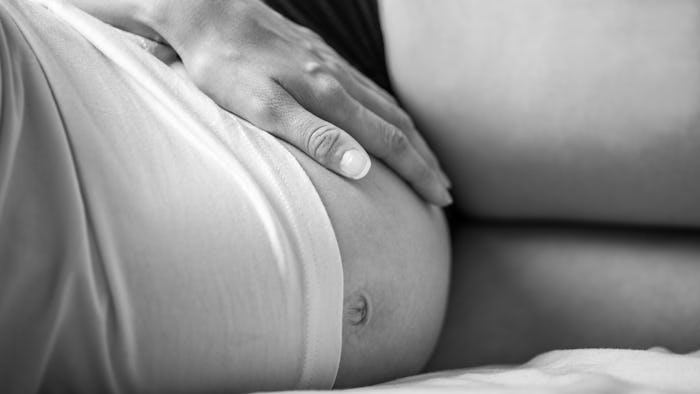Life

Nipple Stimulation Works To Induce Labor, But That Doesn’t Mean You Should Try It
By the end of pregnancy, I was totally over it. In order to achieve my goal of no longer being pregnant, I did some reading about natural ways to induce labor. No surprise, the internet is full of ways to bring on labor at the end of pregnancy, and one of the most intriguing tips I read was that nipple stimulation can induce labor. Many people report having a baby within days of actively engaging their nipples, whether it was done by pulling out the breast pump or enlisting their partner’s help to make the process a little more enjoyable.
According to a recent survey published in the journal Birth, I’m not alone in trying to bring on labor myself. The survey found that 50 percent of pregnant women report trying to induce labor during the final days of pregnancy. Walking was found the be the most popular approach, followed by intercourse, eating spicy foods, and nipple stimulation. Some of these methods have been around for a while, including nipple stimulation, which midwives used to speed up stalled labors in the eighteenth and nineteenth centuries.
So how does it work? Well, according to Fit Pregnancy, prolonged nipple stimulation prompts the release of oxytocin, which is the hormone that induces contractions. A Cochrane Database review that included 719 women at 37 weeks pregnant or beyond found that nearly 40 percent of those who stimulated their nipples for one to three hours per day had their babies within three days, while only six percent of the control group gave birth.
Now, we’re not talking about some casual tweaking. In these studies, nipple stimulation consisted of rubbing one nipple for 10 to 15 minutes before switching to the other side, and continuing to alternate between breasts for an hour, three times a day. That is a lot of work and a very concerted effort.
But even though research seems to indicate that nipple stimulation can induce labor, experts warn against trying it at home. “You have to be very careful that you are not over stimulating the uterus and making the contractions too strong or too close together,” Suzy Myers, a certified professional midwife and chairwoman of the department of midwifery at Bastyr University in Kenmore, Washington told Fit Pregnancy.
It turns out that nipple stimulation can work too well when it comes to inducing contractions, sometimes causing painfully strong and incredibly long uterine contractions that have the potential to lower the fetal heart rate. This is why Myers adds that “you have to make sure the baby is tolerating it well by having your healthcare provider monitor [their] heartbeat.” Authors of the Cochrane Database review seem to agree, as they recommended not to use nipple stimulation in high-risk women until safety issues have been fully evaluated.
So while nipple stimulation may seem like a great trick to pull out in desperate times, consider making some eggplant parm instead (it worked for me). Or , horror of horrors, you may just have to be patient and wait it out.